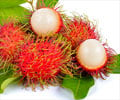Researchers confirmed that the technique developed at Rice would be a breakthrough in detecting DNA-sized nanotubes inside living organisms Carbon nanotubes are much smaller than living cells, and they give off fluorescent light in a way that researchers hope to harness to detect diseases earlier than currently possible. In order to do that, we need to learn how to detect and monitor nanotubes inside living tissues, and we must also determine whether they pose any hazards to organisms," said research co-author Bruce Weisman, professor of chemistry.
Several studies have been conducted to see how carbon nanotubes interact with tissues of rabbits, mice and other animals.However, Weisman and the study’s co-author Kathleen Beckingham, professor of biochemistry and cell biology, chose the fruit fly Drosophila melanogaster to attempt the first-ever detection of nanotubes inside a living animal.
"Drosophila is one of biology's pre-eminent model organisms. We have a wealth of knowledge about the genetic and biochemical workings of fruit flies, and this presents us with unique opportunities to explore the effects and fate of single-walled carbon nanotubes in a living organism," said Beckingham.
During the study, available in the American Chemical Society’s journal Nano Letters, fruit fly larvae were raised on a yeast paste that contained carbon nanotubes. The flies were fed this food from the time they hatched throughout their initial feeding phase of four to five days.
The study report suggests that fruit flies are ravenous eaters during this period and gain weight continuously until they are about 200 times heavier than hatchlings. They then become pupae.
As pupae, they do not eat or grow. They mature inside pupal cases and emerge as adult flies, adds the report.
The nanotube-fed larvae also survived to adulthood just as well as the control group.
The researchers say that they were able to use a special camera to view the glowing nanotubes inside living flies. Videos constructed from these images clearly showed peristaltic movements in the digestive system, they add.
Upon removing and examining tissues from the flies, the researchers found that the near-infrared microscope allowed them to see and identify individual nanotubes inside the tissue specimens.
The highest concentration of nanotubes was found in the dorsal vessel, which is analogous to a main blood vessel in a mammal, while lesser concentrations were found in the brain, ventral nerve cord, salivary glands, trachea and fat.
Based on their findings, the researchers reckon that only about one in 100 million nanotubes passed through the gut wall and became incorporated into the flies' organs.
Source-ANI
SPH/C










